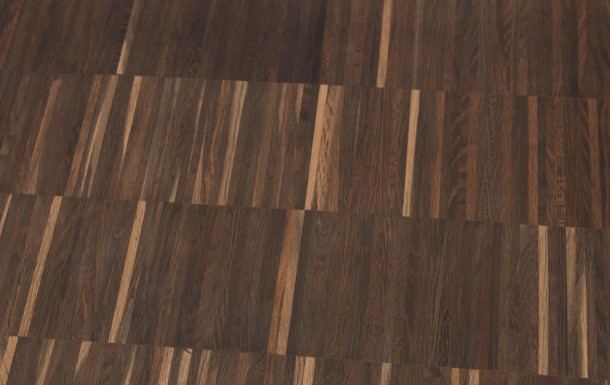Solid Parquet
Collections
What is a solid parquet floor?
Solid parquet is the traditional parquet parquet par excellence. Solid parquet has been laid for hundreds of years! You only have to look down when you visit the many castles of Belgian heritage. Solid wooden floors have been in place for a very long time and are still being renovated to this very day.
A solid parquet floor is entirely made of wood, unlike laminated parquet or laminate floors. all of the same kind. It is assembled by tongue and groove, male and female sides. The tongue and groove connection is only a guide and is not sufficient for laying.
So it is a completely natural product and above all it can be renovated. Sanding and finishing makes it possible to refurbish it without having to change it.
The different types of solid parquet
Solid oak parquet
Oak is the most commonly used material for solid wood floors. It is important to know that it can show more or less large knots, sometimes cracks, wormholes, sapwood (the white part at the edge of the planks), as well as more or less important colour variations between the planks.
The aesthetics and price of your floor will depend entirely on these shades and the grading you choose (many or few knots).
Warning: a solid parquet floor is not necessarily a poor quality parquet floor because it contains a lot of knots and sapwood. The choice of wood is only an aesthetic indication and it is mainly a matter of taste.
Other types of wood in solid parquet
In Belgium, solid parquet is 90% made of oak. However, it exists in all types of wood, such as ash, chestnut, pine, ipé, merbau, teak, wenge or walnut, or many other types of wood.
Note that some types of wood are more nervous than others and tend to move more easily. For all dark exotic species, keep in mind that your floor may change colour with the sun and exposure to UV rays.
Installation: Laying technique for solid parquet flooring
The technique of laying a solid parquet floor is essential and unavoidable. In all cases, a solid parquet floor must absolutely be firmly anchored to the ground.
You can therefore choose between a glued installation, preferably for new buildings, or a nailed installation on joists, the traditional form. Floating installation is not possible with solid floors.
Finishing of Solid Parquet
Thanks to industrial technologies, today's parquet manufacturers can supply solid parquet floors that have already been finished, either varnished or oiled, but not only. They also apply shades and virtually any colour is possible.
They can also give solid parquet a texture by brushing, ageing, waxing or sawing.
The solid wood flooring collections are now very extensive and there is something for everyone! If you can't find what you're looking for in the shop, you can always count on a parquet floor fitter to finish the floor on the spot, on a rough parquet floor. Make sure, of course, that you reserve this type of service for a real parquet specialist. Parquet floors already finished in the factory always have chamfers, either 2 on the long side or 4 on each side.
Prices for solid parquet
The price of a solid wood floor is very variable and depends on many criteria: size, choice of wood, finish, etc... You will find solid wood floors from 40 € per m² and up to 150 € per m², or even more for our ultra-special floors.


